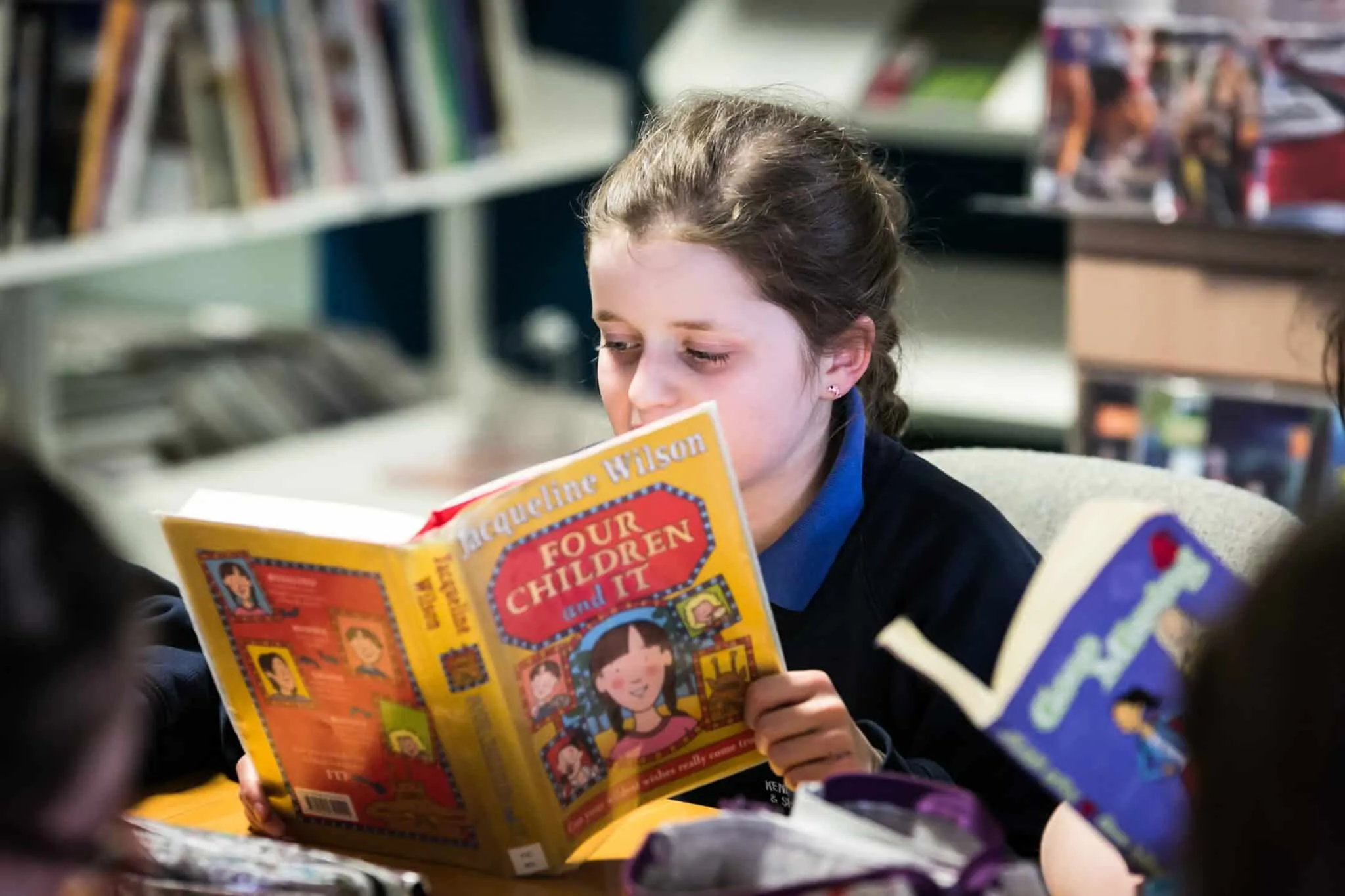October 8, 2024
By Georgina Cook, Product Marketing Manager
What I wish I’d known about Accelerated Reader as a Literacy Lead
Reading is fundamental to language development and lifelong learning. With a recent National Literacy Trust survey [1]showing that reading for pleasure is at its lowest since 2005, schools face the increasing challenge of promoting the importance of regular reading.
Having spent 20 years as an English teacher and as a mother of three, I’ve long valued the impact of reading. I’ve cherished sharing bedtime stories with my own children and witnessed the transformative power of literature in the classroom, where books like Private Peaceful and Of Mice and Men brought shared emotional experiences among my students.
However, many children in today’s digital world are not bitten by the reading bug. They may never experience the joy of reading or may lose interest as distractions multiply. As a parent and educator, I want children to access and engage with language. Whether it’s fiction or non-fiction, what matters is that they are comfortable with language—enabling them to share ideas, speak confidently in a job interview, or articulate their emotions in relationships. The ability to process language fosters understanding and empathy, which is essential for a well-rounded, democratic society.
For adults, the task is clear: model reading habits, rave about books that have moved us, and provide those valuable shared experiences. I truly believe that if a child finds just one book they love, it can ignite a lifelong passion for reading.
Initial thoughts on Accelerated Reader
When I first encountered Accelerated Reader (AR) at my school, I wasn’t convinced. AR library lessons for Years 7 and 8 were not being used effectively—students were working together on quizzes, teachers were using the time for unrelated tasks, and there was little enthusiasm around reading. I had quickly dismissed AR as a ‘sticking plaster,’ believing literacy advocacy among staff and quality CPD were more crucial.
A change in perspective
It wasn’t until I saw AR in action at a different school that my opinion changed. There, AR was used in a way that fostered genuine engagement with books. The teacher initiated rich discussions about the texts, a teaching assistant worked closely with students on group reading, and the librarian actively participated in recommending books and discussing quiz results with students. The room buzzed with excitement for reading, and I realised I had misunderstood AR’s potential.
The AR programme was initially developed by a mother frustrated by her children’s disinterest in reading—a feeling I can relate to! Children may start with enthusiasm for bedtime stories but later lose motivation, not seeing the value in reading at all. AR seeks to rekindle that excitement, supported by research and psychometric testing to ensure quizzes measure true comprehension.
Over 100 new quizzes are added each month, and teachers can request quizzes for specific books – this tried and tested model listens to teachers and students across the world. It would take a teacher countless hours to replicate the diversity and range of quizzes available through AR. Far from being a platform about competition and quizzing alone, however, I saw clearly what was at the heart of AR: getting kids reading regularly and reading well.
The role of Star Reading
Another valuable tool within AR is Star Reading, which provides data from standardised reading tests to help tailor reading recommendations and monitor progress. This allows schools to track a student’s reading development and assess the impact of their literacy strategies. Star Reading data is an asset that is impossible to replicate at school or trust level, making it an indispensable part of the programme.
Effective implementation
For AR to succeed, it must be well-implemented. According to Renaissance’s latest efficacy study[2], reading for at least 15 minutes daily is crucial for improvement, with 30 minutes being optimal. While this can be a challenge in secondary schools, it’s not impossible. The mistake I’ve seen schools make is scheduling AR time once a week or even once a fortnight, which is insufficient for real impact. Regular reading time is essential.
AR helps students read within their zone of proximal development, offering a range of texts that support but also challenge them. In my 20 years of teaching, I’ve learned that students need to see diversity in text choices. AR provides an excellent opportunity for students to find books that suit their interests and literacy levels.
For students who struggle with memory, processing or have gaps in literacy, regular reading can significantly boost cognitive development, improve focus and expand language skills. As with any skill, consistent practice is key.
Five key takeaways
- Start early: Give AR time to be fully embedded. Building a reading culture takes time, and it’s important not to expect immediate results.
- Create a reading-friendly environment: Provide a space that encourages reading, is filled with enriching book choices and celebrates literacy.
- Be a role model: Let children see adults reading and engaging with texts. This simple act can make a significant impact on students.
- Use the data: Leverage both AR quiz results and Star Reading data to track progress and guide your literacy strategy.
- Incorporate AR into a broader literacy plan: AR is not a standalone solution but a vital part of a comprehensive literacy programme that promotes regular reading.
Regular reading is one of the most powerful habits children can develop. It enhances creativity, empathy and understanding, paving the way for academic success and personal growth.
Whether you’ve tried AR before or are new to it, I encourage you to see its value in cultivating a structured and supportive reading environment. If one book or conversation sparks a love for reading in a child, it’s a gift that will last a lifetime.
[1] ‘Children and Young People’s Reading in 2023’National Literacy Trust Reading_trends_2023.pdf (cdn.ngo)
